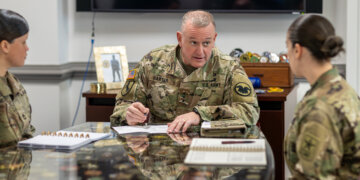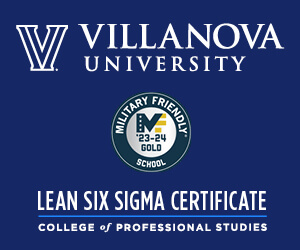Many service members contemplate switching branches or components throughout their time in the military. The question of switching from the National Guard to the reserves, or active duty to a reserve component can be a difficult decision to make — especially when information on transitioning isn’t always easy to find. Each component within each branch of service offers very different opportunities that could make the difference in the overall happiness and fulfillment of a career.
Chief Warrant Officer 3 Perionio Brito faced this choice in 2012. He was serving in the Navy Reserve at the time as a seabee, but wanted to better himself and seek out more opportunities for advancement. This led him to become a warrant officer in the Army Reserve.
“I felt like there were more advancement opportunities for me in the Army,” said Brito. “The Army Reserves was the quickest and easiest way of becoming a warrant officer in my field, and they took my civilian engineering experience into account.”
Brito now serves as a Construction Engineering Technician in the 301st Forward Engineer Support Team – Main. He says he doesn’t regret his decision to switch, but has words of wisdom to share with those contemplating becoming a warrant officer in a reserve component.
“We only represent a small percentage of the force, and we’re understaffed,” said Brito. “I was tagged for a deployment right after I finished my initial military training and was MOS qualified.”
Capt. Nicholas Cardon, a Career Management Officer with 1st Battalion Army Reserve Careers Group, says that he encounters service members looking to switch components frequently.
“People approach me all the time to inquire about switching to the reserve component,” said Cardon. “Many of them recently left active duty and miss serving, as well as benefits like affordable health insurance.”
With average health insurance premiums surpassing $1,000 per month for a family in the U.S., the $238.99 monthly premium of Tricare Reserve Select stands out as a major benefit to those active duty members contemplating transitioning to a Reserve component.
In addition to being a USAR Career Manager, Cardon serves as a police officer in the Suffolk County Police Department, a job he says is perfect for someone in his position.
“As a reservist on Title 10 orders, I’m able to accrue time not only toward my federal pension with the Army, but toward my county pension as well,” said Cardon.
Like the Army Reserve, the other components of each branch of service offer multiple ways of serving full time.
The Active Guard and Reserve program covers the USAR and National Guard, Navy Full Time Support, Marine Corps Active Reserve and Air Force Active Reserve. AGR offers service members a way to serve full time with full federal benefits for a three-to-four-year term and return back to their civilian career when those orders are done. For members of the National Guard there are a few more options such as Title 32 orders and State Active Duty. When placed on Title 32 orders for less than 30 days, most federal benefits will not be available, and when placed on SAD their time won’t count as “active service” for VA benefits.
Capt. Patric Brown recently transitioned to the New York Army National Guard in 2020 after eight years on active duty. Brown, a former West Point instructor, now serves as an Officer Candidate School instructor at the 106TH Regiment Regional Training Institute. Brown cited the ability to continue instructing future officers as one of the main reasons he selected the Army National Guard over the Army Reserve.
“I specifically chose the National Guard because they had a job opportunity with a unit close to my home and it was a position that allowed me to continue to teach,” said Brown.
The Army National Guard stands out as the only reserve component in any branch of the military offering OCS on a part-time schedule.
However, Brown points out that regardless of component choice, the transition off active duty isn’t an easy one.
“I can honestly say that the switch was harder than I thought it would be,” said Brown. “You don’t realize how regimented you become when you serve on active duty — walking into a life that doesn’t have the structure or discipline that you’re accustomed to while serving is hard to get used to.”
Medical coverage was another hurdle that Brown had to overcome in his transition.
“The largest drawback from the switch was transitioning medical coverage for my family and I,” said Brown. “The switch over wasn’t as easy or as quick as we were told it would be, which left my wife and I a number of medical bills after she gave birth that we had to work through while we got the coverage squared away.”
Regardless of which component a service member may decide to switch to, understanding VA benefits eligibility status is crucial information when making the decision. Benefits vary across components and depend on what type of orders you serve under. Ultimately, factors such as job type, rate of promotion, medical benefits and quality of life will be the most important criteria to consider when contemplating a switch in component.
Read comments








































